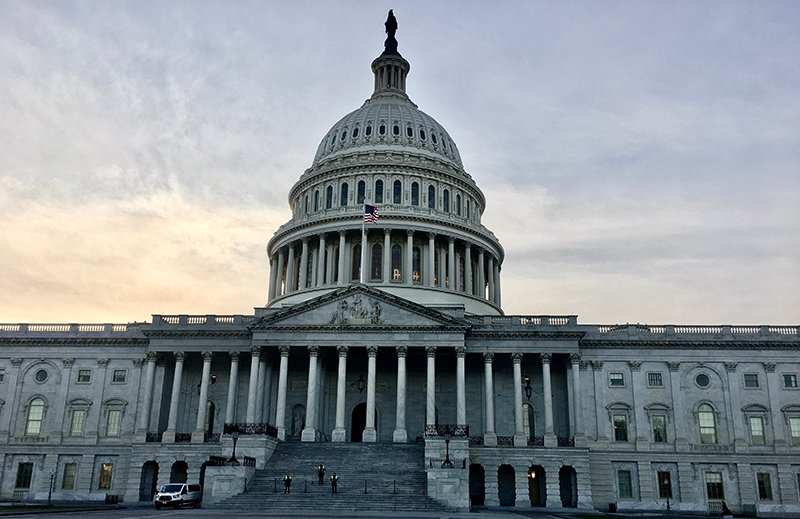
Staff diversity is a glaring issue in the most diverse Congress in history, but the $15 minimum wage could help
Sure, the 117th congress is the most diverse ever, but those who keep Washington running are overwhelmingly white.
Despite permanent changes made in January, staff diversity in Congress is overwhelmingly white.
The 117th session of Congress surpassed diversity records after the 2020 election. The number of women elected beat 2019’s record, and there’s also a record number of BIPOC and LGBTQ elected officials on Capitol Hill
The 117th Congress has the largest representation of racial and ethnic groups in history, a 97 % increase over the past 10 congresses.
But looking at the current numbers, it’s merely a drastic increase from an original sum that was virtually zero.
Last summer, Rep. Tony Cárdenas highlighted the longstanding issue in Congress’ staff, saying the legislative body was “failing” on staff diversity, and that the diversity of staff among representatives and senators is not reflective of their staff members.
He first wrote a letter to House Democrats at the height of Black Lives Matter protests in June 2020, where he referenced a study by the Joint Center, which revealed in 2018, that 84% of chiefs of staff, 88% of legislative directors, and 87% of communications directors were white. Out of 1,110 senior staff positions, just 152 were BIPOC.
Cárdenas called for the formation of a task force made up of lawmakers to identify best practices in hiring a more diverse staff and ensuring more equitable hiring practices.
It happened.
Mere hours after his call to action, House Democrats adopted a new caucus diversity rule urging that congressional offices should “to the extent practicable,” work with the House Diversity and Inclusion Office, created at the start of the 116th Congress.
House leadership released new rules for the 117 Congress, claiming to “modernize” the House of Representatives.
But there are no concrete signs of change yet, which is the core of a Politico article published this week.
Maya King reported that there are only 10 communications directors of color out of roughly 100 in the U.S. Senate.
“Among top-level staffers, the lack of diversity is most striking: There are only two Black chiefs of staff in the Senate and only four Latinos,” King writes.
These are the people who run Washington in a different sense. They draft policies, plan legislation, schedule hearings and interviews, and more. But very few BIPOC staffers are seen among their ranks.
It sets up a precarious situation for legislators from predominantly BIPOC communities.
If staffers don’t represent the communities they are supposed to represent, it unravels their team’s attempts to solve issues in their communities. It’s a recipe for disjunction.
It's an issue that, when it comes to policy and communicating initiatives that will affect constituents from districts with large BIPOC populations, leaves a ton of room for things to get lost in translation — visually, culturally, and in terms of familiarity.
All are innate aspects that cannot be translated via a press release.
“In Delaware, Maryland and Virginia, three states where Black voters account for 25% of the electorate and were nearly 40% of the 2016 Democratic base, there is just one Black staffer in a top Senate position,” King writes.
RELATED CONTENT
This specific aspect of the diversity issue is glaring among Republicans in the South, who represent regions with large Black populations. Politico reports they “maintain almost all-white midlevel and senior staff.”
Rep. Ocasio Cortez responds
Rep. Alexandria Ocasio-Cortez responded to the grim numbers, and found a link with relevance to the ongoing debates on President Biden’s pending $1.9 trillion COVID-19 relief bill.
“This is because Congress doesn’t pay enough to retain working class talent. Conservatives use cutting Congress’ budget to score points, but this cuts staff wages so low that many can’t afford to work here or need a 2nd job,” Rep. AOC wrote on Twitter.
The New York rep later added that the only way issues like Congress’ “failure” in staff diversity will improve is through investment — like increasing the minimum wage to $15 an hour.
This is because Congress doesn’t pay enough to retain working class talent.
— Alexandria Ocasio-Cortez (@AOC) February 23, 2021
Conservatives use cutting Congress’ budget to score points, but this cuts staff wages so low that many can’t afford to work here or need a 2nd job.
Policy improves & the nation benefits when we invest. https://t.co/kcSCc5AGgl
“There are of course many other structural factors (including Congress itself), but low pay shuts the door for so many talented people right out of the gate that they can’t accept the opportunity.”
Wages at or slightly above the federal minimum and unpaid internships, which are commonplace on Capitol Hill, are difficult for many prospective employees to manage, despite the opportunity.
“Some wages are so low they essentially require generational wealth to subsidize [...] Many will not/cannot make that choice given the demands, but the scarcity is unnecessary- Congress should choose to expand the MRA & pay staff,” Rep. AOC continued, adding that “for the record,” she pays all her interns $15 an hour, and all paid staff is “in the mid $50’s.”
Lawmakers are in the process of deliberating a key ruling from Senate officials, on whether Biden’s proposed $15-an-hour minimum wage can remain in his $1.9 trillion coronavirus relief bill.
GOP members have countered with a plan to raise the federal minimum wage to $10 per hour, incrementally over five years.
Deliberations are ongoing.










LEAVE A COMMENT: